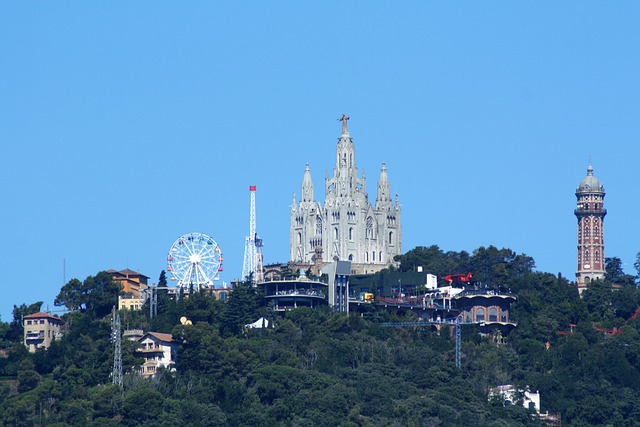The Garriga Nogués House, a majestic work by the architect Enric Sagnier i Villavecchia, hides an unparalleled artistic treasure: the Museum of Forbidden Art. This avant-garde space, inaugurated this year 2023, stands out as the first in the world dedicated exclusively to exhibiting works of art that were censored, banned or withdrawn from public exhibition.
Under the initiative of journalist and businessman Tatxo Benet, this cultural centre redefines the artistic narrative by offering a collection that challenges conventions and encourages dialogues about freedom of expression and censorship. We recommend exploring it through its most impressive pieces and offer you a detailed vision of the most outstanding works housed in the collection. An exceptional venue and a unique artistic experience.
Casa Garriga Nogués, a modernist jewel
Located on Carrer de la Diputació and built for the banker Rupert Garriga Nogués, this building represents a privileged space of original architectural modernism. Declared an Asset of Cultural Interest in 1980, it stands in the ‘Quadrat d’Or’, an area in the Eixample known by this name due to the large number of modernist buildings located there.
The façade of Casa Garriga is a mix of classical, baroque and modernist elements. Standing out is the balcony supported by four columns that the sculptor Eusebi Arnau created to represent the four stages of life: childhood, adolescence, adulthood and old age. Inside the house, the majestic marble staircase and the stained glass windows by Antoni Rigalt depicting natural landscapes will draw your attention.
The origin of the Museum of Forbidden Art
The museum’s origins date back to an incident at ARCO 2018, when a work acquired by Benet, “Political Prisoners in Contemporary Spain” by artist Santiago Sierra, was removed after its purchase. This event marked the beginning of a unique collection that currently houses nearly 200 works, with about forty on display, highlighting creativity in the face of censorship.
Each work, whether a painting, installation or photograph, acts as a window onto themes ranging from feminist issues to critiques of theocratic powers. It should be noted that the Museum of Forbidden Art is not conceived as a static space. It aspires to be an internationally renowned interactive and transmedia centre. For this reason, its programming covers various disciplines, from literature to dance and cinema, focusing on mechanisms of censorship.

A hidden Goya in Barcelona
The museum’s collection establishes a journey that spans the 18th century to the present day, offering a fascinating look at resistance in the midst of adversity. The thematic diversity of the exhibition reflects the complexity of the human condition and serves as a living reminder of the importance of freedom of expression in artistic creation, regardless of the era in which we find ourselves.
The oldest piece in the museum is ‘Los Caprichos‘ by Francisco de Goya, a series of satirical etchings made between 1797 and 1799. It is an impressive collection of caricature prints that offer a satirical look at superstitions, fanaticism and the decline of reason. This masterpiece not only illuminates the defects of a corrupt Spain of the time, but also reveals the vindicatory nature of Goya, who withdrew the series for fear of reprisals from the Holy Inquisition.
From Pablo Picasso to Jani Leinonen
Another series of relevant engravings is ‘Suite 347′ by Pablo Picasso, censored in 1968 for its highly erotic content and the irreverent portrayal of the Pope. Conceived five years before the death of the artist from Malaga, these engravings recreate the erotic games of the painter Rafael with his lover Formarina, with the presence of several voyeurs. Just recently, in 2012, the Russian Orthodox Church also condemned the exhibition of this work in the Siberian city of Novosibirsk.
In the context of contemporary works, it is worth mentioning Jani Leinonen’s ‘McJesus’, a striking 2019 depiction of a crucified McDonald’s clown that, due to its irreverent symbolism, sparked controversy. When this work was exhibited in the Haifa Art Museum, in Israel, it provoked an unexpected reaction, with hundreds of Christians throwing stones in an attempt to destroy the image.
From Eugeni Merino to Zoulikha Bouabdellah
The sculpture ‘Always Franco’ by Eugenio Merino, created in 2012, presents an even more contemporary perspective. The work places the former dictator inside a Coca-Cola vending machine, offering a satirical and provocative vision leading to a lawsuit from the Francisco Franco Foundation. The artist wanted to reflect on how, in Spain, this leader remains as an image frozen in our conscience.
Zoulikha Bouabdellah’s provocative installation ‘Silence Bleu’, which juxtaposes thirty pairs of stiletto shoes on Islamic prayer rugs, promotes another profound reflection on the intersection of religion and contemporary society (2015). A work that you can discover along with others by such renowned artists as Ai Weiwei, Robert Mapplethorpe and Gustav Klimt.
Prepare your visit to the museum
In addition to strolling through the imposing rooms, you can also discover the museum with the free interactive digital guide, accessed from your own device. This will allow you to delve deeper into the artistic context and the repercussions of works prohibited for religious, political and social reasons. In the museum store, you will also discover a wide variety of merchandise including textiles, jewellery, designed items for the home or desktop, prints and a selection of books.
Particularly relevant is the museum’s catalogue, which reproduces a selection of works by modern and contemporary artists that have been banned, persecuted, cancelled or censored. This catalogue is accompanied by texts written by experts such as Jordi Carrión and Joan Fontcuberta and includes engravings, paintings, sculptures or installations that have challenged political and cultural institutions, triggering debates that continue right up to the present day.
 Book Tickets
Book Tickets



